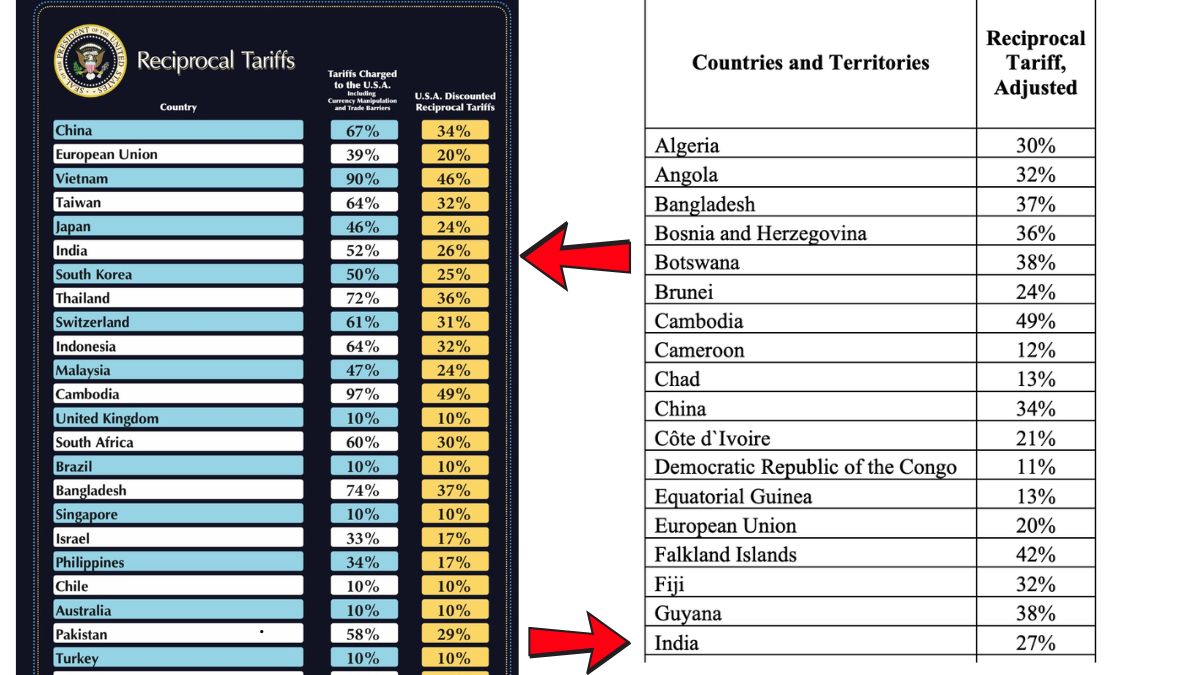Even as U.S. President Donald Trump officially announced reciprocal tariffs on about 60 countries—including India—there remains confusion over the actual rate being imposed on Indian imports. While President Trump, during his Rose Garden speech on April 2, explicitly stated a reciprocal tariff of 26% on India, the Annex I document published on the White House website lists India’s tariff at 27%.
The discrepancy has raised questions among analysts and exporters alike. Trump’s presentation, which included a chart comparing original and adjusted tariffs, pegged India’s effective rate at 26%—down from a claimed 52% overall barrier (tariff + non-tariff). However, the official annex shows a flat 27% rate applied to India, suggesting that either there has been a miscommunication or that the rate may yet be finalized or adjusted.
Despite the inconsistency, most stakeholders are aligning with the President’s verbal mention of 26%, as it came directly from the executive announcement and was visually backed by an official chart during the address. A senior Indian government official acknowledged the contradiction and said the Commerce Ministry is analyzing the potential impact. “There’s a possibility that the 27% mentioned in the annex could be a clerical error or an upper ceiling, and 26% could be the applied rate,” the official added.
India is also engaged in trade agreement talks with the U.S., and some believe the tariffs could be softened if consensus is reached in upcoming negotiations. Export bodies like FIEO have acknowledged the tariffs could hurt Indian exporters in sectors like chemicals, textiles, engineering, and auto parts—but also believe India is better placed compared to peers like Vietnam or China.
As of now, the 10% baseline tariff will be implemented from April 5, and the country-specific reciprocal duties—whether 26% or 27% for India—are expected to kick in from April 9.
Disclaimer: The information provided is for informational purposes only and should not be considered financial or investment advice. Stock market investments are subject to market risks. Always conduct your own research or consult a financial advisor before making investment decisions. Author or Business Upturn is not liable for any losses arising from the use of this information.


